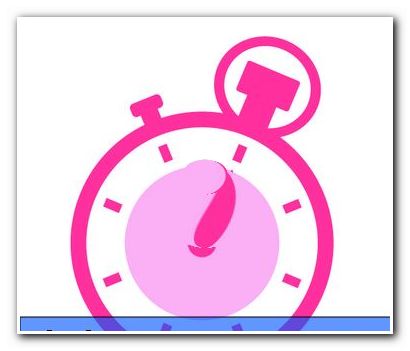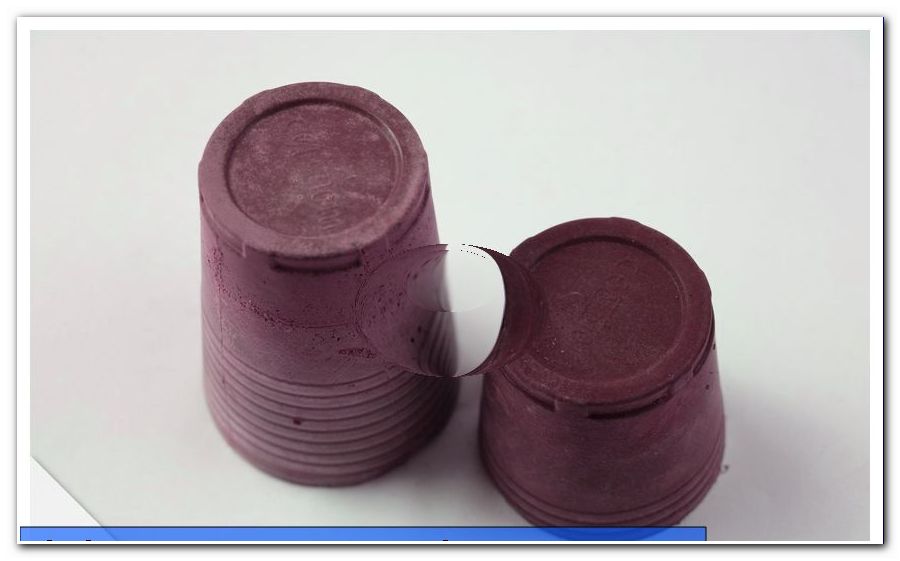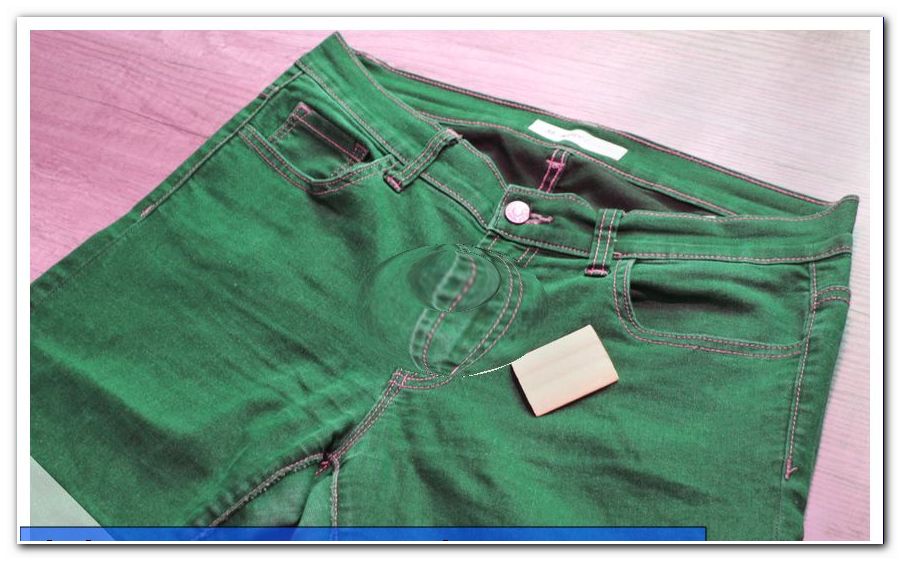Repair washing machine - find and fix symptoms

- Five typical claims
- Machine is "dead"
- Machine "stutters" and does not spin properly
- Machine is not pumping
- Washing machine is running out
- Machine rattles and beats loudly
- Motor does not turn drum
- Which repairs are worthwhile "> Five typical damage cases
In advance: A very helpful tool in the repair of a washing machine is a wet vacuum. These are now very cheap to have. As a used device you get a wet vacuum for 20 euros or less. If necessary, a device should be borrowed, so that the work on the washing machine can be carried out as smoothly and pleasantly as possible.
Before troubleshooting, this is very important:
- Turn off the water
- pumping
- Connect the waste water hose to the wet vacuum
- remove the residual water from the machine.
Machine is "dead"
If the machine does not emit a light signal or a beep, then something is wrong with the electronics. Here you first look at the fuses . A typical error is that the power grid is overloaded by using too many devices at the same time and shuts off a fuse. If the fuse is switched off, then switch off all other consumers first and then switch on the fuse for the washing machine again. If the fuse then triggers immediately, there is a defect in the washing machine.

Check fuses In the next step you look at - when the fuse is off the power cable - exactly. It will be deducted. If charring is detected on the plug, moisture has penetrated and caused the short circuit. There may also be damages in the insulation. Here it helps to replace the cable completely. For this purpose, the washing machine is disassembled so far - usually the removal of the lid and side wall are sufficient - until the connection of the power cable is accessible. This is connected by a strain relief and a luster terminal with the electronics of the washing machine. Simply loosen the three screws, remove the old cable, connect the new one and the washing machine will run again. However, only suitable for damp rooms suitable power cables may be used. If this does not solve the problem, the customer service should be contacted.
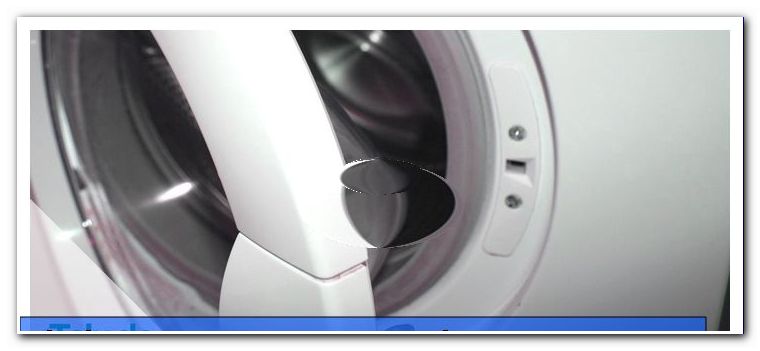
Washing machine door contact A typical fault that can stop a machine is a broken door contact . Although this is easy to fix, the repair should still be carried out only by a specialist.
Machine "stutters" and does not spin properly
This is a typical symptom of worn coals on the drive motor . These can be bought for a few euros (about 8-30 euros ). They are located in a plastic carrier, which is attached to the electric motor with one or two screws. These are easily exchanged. Does not help this measure, the engine is defective. An exchange of the whole engine is usually not worthwhile.
Machine is not pumping
The failure of the pumping function is a common mistake in a washing machine, but it can have many causes.
The typical symptoms are:- the machine is leaking
- the drum does not spin
- the device beats and hops
- no water comes in
- the laundry is still warm at the end of the washing process
- the laundry smells funny and will not clean
- squealing or rattling noises
Mostly the pump or the drain hose is just clogged . The famous "fed sock" is the most common trigger. For this, all washing machines have a cleaning opening in front of the pump, with which they can be examined for foreign bodies. The manual of the washing machine gives detailed information. If the manual is not available, it can be searched and downloaded on the internet.
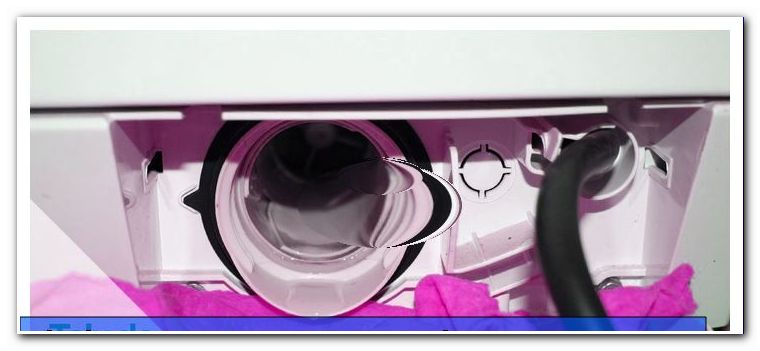
cleaning opening Often the problem with a disturbed pumping function can also be found on the other side: If the washing machine can not even suck in water, then it can not pump it off either. If it is ensured that the water is also turned on, then the hose should be examined. Kinks can prevent the inflow. Again, a foreign body, such as calcification, may be the cause. Of course, the pump itself may be defective. However, sharing them is definitely just a job for people who really know the subject matter.
Washing machine is running out
A flood in the laundry room can have many causes. The inner and outer seals of the machine are overloaded with the amount of water present and can not hold them back. This does not necessarily mean that any seal is broken. Washing machines are designed so that they can only retain a certain amount of water. A defective pumping function can, as described above, have many causes. Other possible reasons for an expiring washing machine can be:
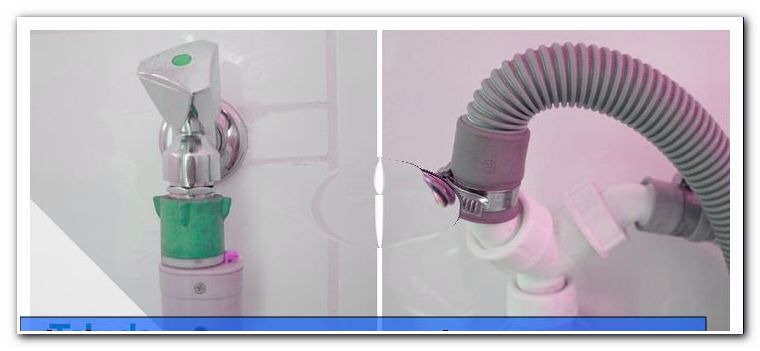
Check supply and waste water - Leak at the beginning of the washing process:
- Inlet hose is blocked and the dispenser drains over
- Hose of Einspülkastens has slipped
- Inlet hose is leaking
- Leakage during the wash program:
- Door seal is leaking
- Pump seal is leaking
- Vat itself is leaking
- Lint filter is leaking.
- Air trap is leaking
- Drum bearing is defective
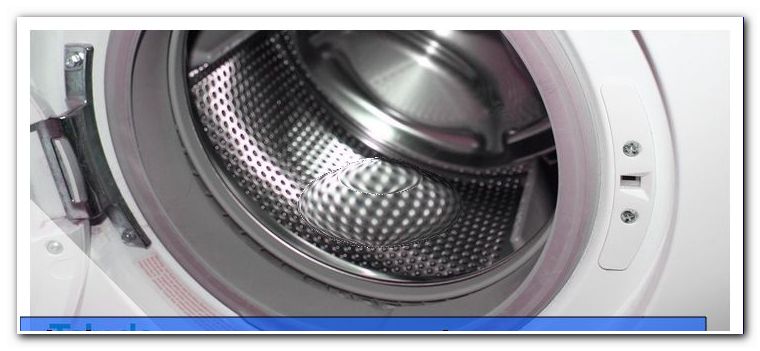
Check seals - Leaking at the end of the washing process:
- Vat is defective above the maximum filling
- Drain hose is defective
A Einspülkasten or even a washing machine tub you can theoretically change yourself. When changing the tub you can also change the drive belt and the bearing immediately. But this is a very time-consuming job, which takes several hours. However, a replacement vat costs several hundred euros . The purchase of a new washing machine is here in most cases the more meaningful way. Torn door seals, however, are very simple and inexpensive to exchange. Also inlet and outlet hoses and to a limited extent also the inner seals in a washing machine.
Machine rattles and beats loudly
Mechanically, a washing machine does a lot of hard work. The wet scrubbing around in the drum creates a strong imbalance, which in front loader machines is only absorbed by a single bearing in the tub. Top loader machines are double-mounted, which greatly reduces wear in the bearings.
A beating and clattering machine therefore usually has a fault in storage as a cause. But that does not necessarily have to be the camp itself.
So that the imbalances can be at all reasonably absorbed, the tub is attached with large tension springs on the housing of the washing machine. These tension springs can hang or break their brackets. They are usually easily accessible after removing the lid. All you have to do is pull out the power plug, unscrew the cover and put the spring back in place. This error usually occurs after moving, if the drum of the washing machine was not secured. If the holder is broken on the housing, the carrier element can usually be unscrewed and replaced. But if the holder is broken on the tub, then the machine is usually beyond saving.
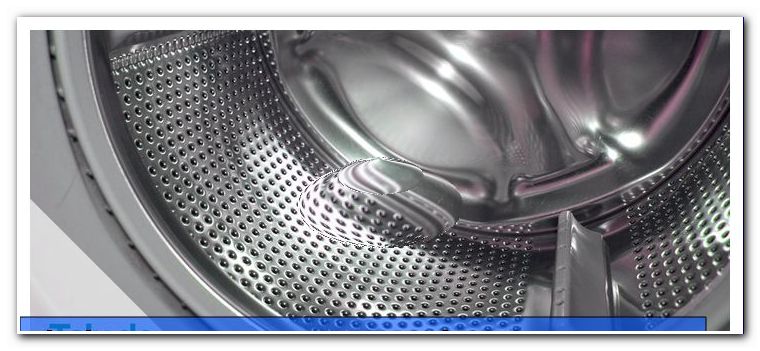
Washing machine drum A defective bearing can be identified by manually twisting the empty drum. If there is a grinding noise and you feel resistance when turning, then the drum bearing is defective. In order to exchange it, the tub has to be removed and dismantled. As a layman one can estimate a Saturday for this work. With a little practice you can do it in 2-3 hours. Changing the bearing always involves replacing the gasket between the halves of the tub. The warehouse costs about 30 euros . The seal costs another 15 euros. However, this work is worthwhile only if you do it yourself. 70-120 euros per hour wage for a professional repair service make this repair mostly uneconomical.
Motor does not turn drum
Here the drive belt is defective. This is located behind the tub. He connects the flywheel with the electric motor. To change it, simply remove the drum, place the new belt on it and tighten again with the drum attached. This is a simple and easy to carry out repair work. A new drive belt costs about 8-20 euros
Which repairs are worthwhile ">
 In plain language, this means: A machine with a replacement value of 400 euros may cause damage of 280 euros until the fourth year, damage of 210 euros until the seventh year, damage of 100 euros until the tenth year and over the tenth year In addition, only a loss of up to 60 euros, in order to be able to be repaired meaningful.
In plain language, this means: A machine with a replacement value of 400 euros may cause damage of 280 euros until the fourth year, damage of 210 euros until the seventh year, damage of 100 euros until the tenth year and over the tenth year In addition, only a loss of up to 60 euros, in order to be able to be repaired meaningful.For new equipment, a warranty extension up to 5 years can be booked today. Depending on the value of the device, this may be useful to provide reasonably effective protection for up to 5 years. However, the warranty for own negligence does not apply: For example, pumps clogged with foreign bodies are not covered by the guarantee.
Tips for quick readers
- A wet vacuum cleaner belongs in every household today. At the latest when the washing machine is broken, the device can save the day.
- Systematic troubleshooting helps to isolate the damage.
- Repair attempts only with unplugged plug and turned off water!
- New appliances are extremely inexpensive today. With a limited budget, the purchase of a cheap washing machine for less than 250 euros is sometimes a viable and quick transitional solution if your own washing machine fails.








 In plain language, this means: A machine with a replacement value of 400 euros may cause damage of 280 euros until the fourth year, damage of 210 euros until the seventh year, damage of 100 euros until the tenth year and over the tenth year In addition, only a loss of up to 60 euros, in order to be able to be repaired meaningful.
In plain language, this means: A machine with a replacement value of 400 euros may cause damage of 280 euros until the fourth year, damage of 210 euros until the seventh year, damage of 100 euros until the tenth year and over the tenth year In addition, only a loss of up to 60 euros, in order to be able to be repaired meaningful.